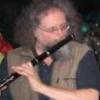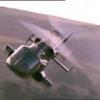-
Posts
1,663 -
Joined
-
Last visited
About Paul Thompson
- Birthday 27/04/1958
Profile Information
-
Gender
Male
-
Location
Dalgety Bay, Fife.
Recent Profile Visitors
5,315 profile views
Paul Thompson's Achievements

Very Obsessed Member (5/9)
2.4k
Reputation
-
Paul Thompson started following 1/72 Westland Wapiti, converted from the FROG(Novo) Wallace , Revell 1/32 Mirage V , Recommendation for 1st WW1 build and 5 others
-
Quite well received when released, previous century, with the biggest downside being the basic cockpit and poor ejector seat. There was at least one resin and PE detail set with full cockpit, and bits like replacement U/C doors, the other version of bang seat as a standalone item was also available (whatever it was the Autstralians used). Can't remember the set makers offhand, and too busy to check right now I'm afraid. Probably hard to find anyway, but they do exist. Apart from the boxings Giorgio lists there was also one with extra decals for Australian machines. Paul.
-
Chaps, the original poster asked about which of the 3 1/72nd kits available in his LHS were most suitable. I know the answer could be 'I wouldn't start from here', but it doesn't help him decide. I'm not being pedantic or grumpy, just trying to stop unintentional thread drift. Paul.
-
I thought so too, until I found a photograph of the survivor in the London Science museum at just the right angle to help make sense of it all. Granted, there are about 10 times the number of wires as on a D.VII, but i was really thinking of the ease of getting them in place, which is harder on a biplane. Still, I see your point, so I'd modify my previous post to say D.VII first so long as the builder can cope with the second wing (which, once you've done it a few times, really isn't as scary or black-arty as all that). Paul.
-
Of those 3, the Fokker E,V - good kit, only one wing, and not much rigging, all of which is easily accessible. The D.VII is a very good kit and has more colourful colour schemes, but while only a little rigging, 2 wings. Mind you, having N interplane struts instead of individual ones makes it much easier to successful get your first biplane together. The F2b is a good kit but much more limited run in nature, which coupled with one of the more complex wing cellules (2 bays, i.e. 8 interplane and 4 cabane struts, plus the fuselage mounted above the lower wing on tiny struts) and extensive rigging leads me to warn you off it until you've got several biplanes under your belt. Summary, go for the E.V, save the D.VII until you're happy with the EV, and forget the F2b for a while. A painless way to get comfortable with the genre is any of the old Revell 1/72nd kits. They're crude by modern standards, there are better kits of most of them, and they have the dreaded strut tie bars to ease getting the top wings on (which work but can look ugly without a lot of care), but they're fairly forgiving, fairly cheap, and can polish up nicely with careful work. Good for messing about with rigging too, without wasting a lot of effort on the building of the actual kit. Paul.
-
There are two distinct shades of both blue and red I've seen supplied by decal manufacturers over the years. And then Eduards, which where very, very bright when they started of, way way back. The duller red is always paired with a chalkier and duller blue. For what I mean, look up the decal sheets from old Blue Max and Pegasus kits, or Blue Rider. They're in the same ball park as Americal Gryphon sheets, so I'd suppose have a common ancestor. I've no idea which is more right, or at least less wrong. Probably a can of worms, but it would be nice to know (I did ask once on the WW1 Mailing list forum, but IIRC there was no concensus). I just had a look on Hannants at a Print Scale Nieuport sheet, and the red seems too bright - same for the blue, but not so bad. Myself, I use duller colours simply because the first French aftermarket decals I used were Blue Rider, which are really dark compared to the Print Scale ones, and I try to keep my models consistent where feasible. Paul.
-
As usual, the answer used to be a set by Part of Poland, which also has the fairings that are otherwise very hard to recreate where the axle meets the undercarriage vees. I got mine 15 or so years ago from the former Luchtvaart Hobbyshop. at very reasonable prices (5 or 6 Euros a throw). I did a Nie. 11 earlier and spent some quality time filing a cutout in the windscreen, thinning it down, and restoring the top with a bit of stretched sprue. Then white glue for the transparent bit. Doesn't look great but better than it was. I still have a few Toko kits in the stash, and they are cruse compared to the later incarnation of the company (Roden), with decals just as awful, but at the time were regarded as pretty damn good. Anyway, your alternative back then was scratchbuilding or converting a Revell 17. I'm not sure but don't think KP have the rights to the Toko toolings. Also don't know if CMR ever did one, which the would have the rights to. The only kits I know of are very crude and early HR resins, although these days I don't trust my memory to guide me out of the house, so I may be wrong. If KP did do one, I'd hope as usual that they'd get their A team on the colour schemes and deal performance/design, but even the terrible ones I've had from their other WWI kits would at least in this case be an improvement on Toko, which were inflexible and shattered like badly stored old decals even when brand new. Worth keeping an eye out for second hand Roseplane accesories. They did resin cowlings and U/C legs which were quite good, and the legs I have for the Revell 28 haven't warped yet, and an 11 or 16 doesn't weigh a lot. Paul.
-
Presumably Nie 11 and 16, being Toko. I thought they all used the same size wheel in wartime. I'd pay little attention to whatever survivors in museums have, they've almost certainly been replaced over the years or at the very least re-tired, with no guarantee of the same type being used. The drawings in the Datafile specials (Nieuport Fighters volume 1 and 2) don't mention any changes, but I'll have a look over the weekend and see if there is mention in the text. IIRC, wheel diameter is mostly determined by aeroplane weight, and 11s and 16s are close enough to require no difference. Perhaps different sizes turned up in non-French service, once initial spares had run out. Paul.
-
Think Pegasus but with harder and brittler plastic, and large worms on the insides of parts to get that plastic to where it should be. Usually a few bits in white metal (E.G. U/C legs or canon barrels ) and wire mesh for DIY radiators (in Spitfire kits). Canopies vac but usually quite good. Having seen what you can do, I think you might actually enjoy building one. Maybe even two. Paul.
-

MiniArt Street Musicians 1930-40s (38078) 1:35
Paul Thompson replied to Mike's topic in Diorama & Accessory
'The lute-like thing' looks like a round-back mandolin. Paul. -
I found the assembly sequence a little unforgiving until you figured it out. It's one of those kits where you ideally build one without concern for screw-ups, then build one for real armed with the knowledge of just where it's all meant to go. that said, it came out okay in the end. Rule of thumb, if you're having trouble fitting something, then it isn't meant to go quite like that. Deep breath. Like many others,I too, have shaky hands (always have, one of the reasons I make models, to beat it down). Everyone varies but for me if stillness is essential then I can subdue it for a short while by breathing in deep, exhaling it all, and quickly doing whatever is being tricky before the next breath. Plus being prepared to do things over far too many times, and always using the least aggressive adhesive that will suffice for the job in case of pear-shapedness. Paul.
-

Painting darker coloured propellers & red brown wood grain.
Paul Thompson replied to TheKinksFan's topic in Aircraft WWI
For French and some British props, a painted finish is what they had, so no laminations usually visible on an airscrew in good condition. Now, unless you model in 1/2 scale or above then any wood grain will also be invisible, but the eye expects to see something, same as with plywood fuselages like Albatrosses and Sopwith turtledecks. For a prop I paint a deep brown colour then several coats of translucent clear, usually a Citadel wash of a sepia nature. The real things may have suffered some weathering if they lasted long enough, but since they're just unsightly blotches I ignore them, unless I have a photo of the specific aircraft and it needs reproducing. Some British props were laminated from wood of very similar colour, which in 1/72nd I feel you could ignore, but in 1/48th I've masked and painted nearly the same colour strips before the sepia wash. Looks better than a plain brown colour anyway (although that might be more in keeping with reality). Making and applying really thin masking tape is not my favourite task though, but it isn't hard, just boring, and I do it normally for props that do show laminations well. Oh, just re-read the OP. I brush paint the sepia, just to work in a bit of faux texture in lieu of grain. Plywood on fuselages shows coarser grain patterns, so I do do that on the above named types, but only because it's expected, as I said before. Seeing photos of the real thing is essential, and I keep various sheets of plywood around the house to remind me. Light base coat, then if the grain is pronounced I draw the stuff on lightly with a dark brown watercolour pencil, if not then I dry brush a suitable pattern with an acrylic brown. The translucent overcoat is essential to smear things out a bit. Done right it the result is like using oils but dries much faster. Paul.- 3 replies
-
- 3
-

-

-
- Fokker E.II
- Propellers
-
(and 1 more)
Tagged with:
-
If they did (KP), it would be a plastic version of the CMR kit almost certainly, which is how they've done most of their recent biplanes. There may be no detail under the CMR wings, but at least the decal sheet is very good (the one I built had decals and PE, I don't recall if there was an earlier release without). Paul.
-

What WW1 airplane kits/bits followed you home today?
Paul Thompson replied to Ted's topic in Aircraft WWI
It's do-able, though. I'd just built one when another arrived in the post courtesy of Windsock for having a letter or photo published (I forget which) when it was all shiny and new. Won't be doing another though............... Paul. -

F167 - Westland Wallace - conversion to Wapiti ***Finished***
Paul Thompson replied to AdrianMF's topic in FROG Squad II GB
Being before 12 noon on April 1st I was going to say you've got the position lights the wrong way round, but am not a naturally cruel man, and there are limits. Lovely job. Paul.- 225 replies
-
- 8
-

-
- FROG
- Westland Wallace
-
(and 1 more)
Tagged with:





.thumb.png.215afe353e1c9159d63490cab7ed977c.png)

